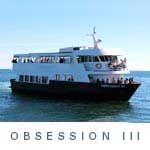Cruise Toronto’s Sail Through Time
Ministry of Education and Training
“A Sail through Time” is tied in with a variety of requirements listed in the Ontario Curriculum.
(A few examples are listed below)
Science and Technology | Earth and Space Systems
Grade 1: Daily and Seasonal Cycles
Weather and water systems of the Great Lakes and the St Lawrence Seaway.
Grade 8: Water systems
How the Great Lakes influence the climate of the region and how humans use the earth’s resources.
Energy and Control
Grade 2: Energy from the wind
How a sailboat works, harnessing the energy of the wind, principles of lift and renewable energy sources.
Grade 3: Forces and Movements
Movements of the ship caused by forces and by energy that is stored and then released.
Grade 5: Conservation of Energy
Differences between renewable and non-renewable energy sources in the area.
Structures and Mechanisms
Grade 4: Pulleys and Gears
Explanation of the purchase system aboard the ship and how pulleys are used to make light work.
Grade 6: Motion Breakdown of the mechanical and combustion system of a compression ignition engine.
Grade 7: Structural Strength and Stability
Ways in which different forces can affect the stability of a ship.
History and Geography
Grade 7: Conflict and Change
Examine the causes of the rebellions of 1837-38 in Upper and Lower Canada.
Grade 7: Natural Resources
Explanation of the Toronto windmill and water pipe system in the lake.
Social Studies | Heritage and Citizenship
Grade 6: First nation Peoples and European Explorers
Early settlements and Native population in and around Toronto Harbour.
Canada and World Connections
Grade 4: The Provinces and Territories of Canada
The chief natural resources of Ontario compared to the rest of Canada.
Grade 6: Canada and its Trading Partners
International shipping in the Great Lakes and St. Lawrence Seaway.
Mathematics | Measurement
Grade 4: Estimate time, distance and length to determine the speed of the ship. Using the lines of latitude and longitude as a grid system to determine location on a chart.
Grade 7 & 8: Advanced chart work such as course plotting determining speed, location and estimated time of arrival at a set destination.
Patterning and Algebra
Grade 5: Using the variables D, S, and T to determine the distance, speed, and elapsed time traveled.
Grade 6: The importance of the different scales used on charts. Learn the solution to a simple equation with one variable.
Physical Education
Pirates and explorers K-4



